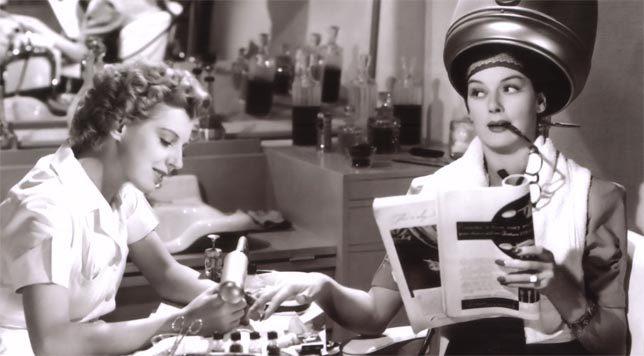
2 minute read
Beauty Shops and Barber Shops: Sharing Gossip, Friendship, and Community

A scene from Beauty Shop (2005) with Golden Brooks, Queen Latifah, and Alfre Woodard. Photo Credit: Nylon.
DaNae Couch, a former Miss Texas, also illuminated the ideas of Southern beauty standards: “You’ll hear people say they want to look like they woke up like this,” she says. “I want to look like I put effort in.”
For a bit of fun, check out “Southern Hair the Year You Were Born” at SouthernLiving.com.
BEAUTY PARLORS, SALONS, AND BARBERSHOPS:
SHARING GOSSIP, FRIENDSHIP, AND COMMUNITY
Robert Harling said about setting Steel Magnolias in a beauty salon: “When I was a kid, the mystique of the beauty parlor was that guys were never allowed. You didn’t know what went on in there, and they all came back different somehow. I realized this hermetically sealed environment would be the best place to have these women express their true feelings.”
Salons have long been a place where people connect with each other and develop relationships deeper than client and stylist. While many salons are now for people of all genders, the traditional separation of beauty parlors and barbershops by gender led to the mystique that Harling describes. Many people have stories of long-standing relationships with their hairstylist or barber and sitting down to chat in the chair is just a natural part of going into the salon or barbershop. In many communities, barbershops and salons are not only a gathering place, but a centerpiece of the neighborhood, especially in Black communities. (For more on beauty and barbershop culture specifically in the Black community, see resource list at the end of this guide.)
While most people would have a story or two of anecdotal evidence of the community created by hair salons and barber shops, researchers have also been intrigued by the unique culture and role of these institutions in society. From Candacy Taylor’s ethnographic interviews for the Library of Congress in 2012 to the documentary film Good Hair to commercial films such as Steel Magnolias and the Barbershop franchise, hair establishments provide fascinating fodder for both cultural commentary and entertainment.
For many, their hairstylist becomes a neutral person with whom to share their frustrations, hopes, daily life, and sometimes bigger personal issues. In some states, certified cosmetologists have to take trainings in responding to disclosure of domestic partner violence or sexual assault. Stylists and barbers are often trusted not only with one’s looks, but one’s stories as well.
Writer of Beauty Shop Politics: African American Women’s Activism in the Beauty Industry, Tiffany Gill, said in an interview with BBC Culture, “I think the personal act of beautification combined with the opportunity to gather with other women and where you are essentially a captive audience allows for the free sharing of ideas and information.” That free sharing is the hallmark of salon and barbershop culture.

Rosalind Russell in 1939’s The Women where the beauty parlor is the center of all the gossip that fuels the action of the film. The Women is thought to be one of the first films to show women’s beauty parlor culture. Photo Credit: Kosak’s Classic Cinema.







